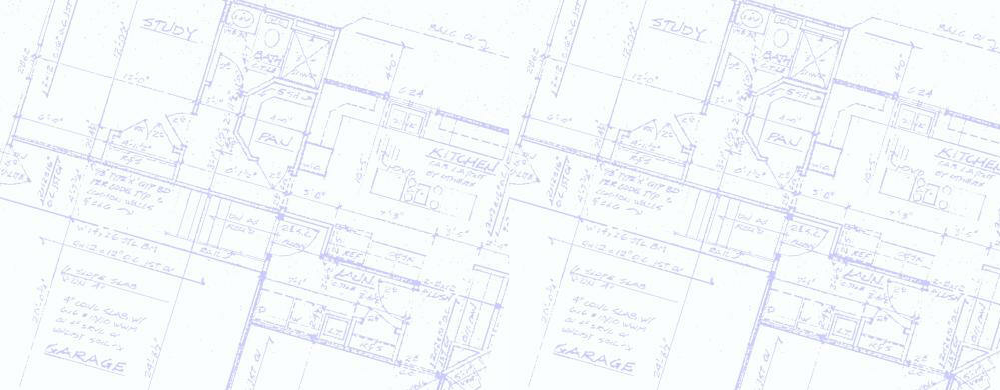







10 Tips for Remodeling
1. Do The Right Project
Remodeling is a major investment. Whether or not to do a project,
and which one to do is a big decision. In deciding which project to do, weigh your
wants. Make a list of Must Dos vs. Want to Dos. Do some research on line, and in
remodeling magazines. Check to see what type of remodeling projects other people
in your neighborhood and town have chosen to do. Then start prioritizing.
2. Have
a Master Plan for Your Home Improvement Projects
By having a master plan there will
be less of the "one step forward, two steps back" activity. Look at the big picture.
Make sure that you consider the total scenario ... not only for now, but for the
future ... include broader or unexpected needs that may not be obvious to you on
first glance. Do you really need a screened porch, or do you need a guest bedroom
and some interior rearrangement? Are you having more children? How will your housing
need change as your children grow, or later as the nest is emptied? Will you need
a space for a nanny? A home office? Will you want to later expand your kitchen into
that space that you are now considering for a sunroom? If you want to redo your kitchen
in three years, is it worth replacing the counters now? Often a phased plan is appropriate,
in which you plan to implement projects over several years. Rather than doing a whole
house remodel now, portions of the total project can be spaced out over time (for
example, this year do the bath, then when the children grow, add a playroom, then
a couple years later, add on a breakfast room and redo the kitchen). Thinking ahead
like this minimizes the chance that projects that you do now will need to be later
undone.
3. Keep the Remodeling Investment Appropriate for Your Neighborhood
How should
you decide what makes sense in terms of an investment? It's important to be aware
of the financial implications of your remodeling choices. Check Remodeling Magazine’s
annual Cost vs. Value report to see what the estimated rate of return is for the
type of project that you are thinking of doing. Have your home appraised in relation
to other ones in your neighborhood to determine what makes sense in terms of an investment
for improvements. Talk to your local realtor. Resale should always be a consideration.
Therefore, even if you plan to stay for a long time, to add something special -
4. Keep Project Within Budget
Whether
your budget is large or small, figure out what it is. Have an understanding also
for your budget's flexibility (or lack thereof!). Having a budget can be a benefit
as well as a limitation because it forces each decision to be considered with an
eye to its effect on the overall job. There are gross measures, such as cost per
sq. ft., that you can use to determine whether your expectations are in the ballpark
or not. Depending on the type of project you are doing this figure can range between
$100 -
5. Choose a Reputable Contractor
The contractor
is the person to whom you will delegate the responsibility of ensuring that the on-
Look for
a company that has design talent as well as understanding of project costs and technical
expertise to excel at the type of project you are considering doing. Find one that
is design-
7. Plan Your Project
Thoroughly: Get Detailed Specs
In order to establish clear expectations all construction
details need to be thought out and specified. These can either be indicated on the
working drawings, on the contract, or a combination of the two. EVERYTHING should
be specified, so that there are no surprises once construction gets underway. Make
sure that you understand all of the drawings and contract specifications.
8. Make Changes Before Construction Begins
It can be very costly, both in dollars and in terms of the project's duration, to
make changes after construction starts. Try to make all changes up front! Design
on the fly has a ripple effect on costs, regardless of whether you add or delete
something. It is time consuming for the contractor to change materials, specs and
worker schedules while work is underway, in addition to the down time that results
while everyone stands around waiting for late decisions and changes from the customer.
Your job can be brought to a complete standstill by changes made during production.
The contractor schedules workers well in advance and may not be able to instantly
reshuffle the worker's schedules.
9. Whether or Not To Do It Yourself
Often potential
clients proclaim that they are considering being their own general contractor. This
is usually followed by an assertion that they feel that they can save a percentage
of the construction costs and thus build the project for less. This may be a short-
(1) Their technical
expertise involves more than just knowing how to read plans and specifications. They
have extensive knowledge of different material and methods such as masonry, carpentry,
cabinet making, roofing, electrical and plumbing work. The contractor will make sure
that the footings are placed correctly, the foundation walls are sound, with appropriate
footing drains, properly waterproofed and so on. A homeowner cannot be expected to
know all of this if their expertise is in some other field.
(2) Secondly, since the
contractor regularly and repeatedly uses the services of his subcontractors, he will
be able to exercise control over them. The average homeowner will only add to a house
once or twice in a lifetime, whereas the contractor may be overseeing five different
projects at once. It is obvious why a plumber will respond sooner to a call from
the contractor, a repeat client, than to a homeowner that he may never see again,
who does not understand what he does, and who might not appreciate the quality of
his work, and who may not pay him easily or quickly. These facts give the contractor
leverage over the subs that a homeowner cannot possibly have.
(3) Thirdly, the sequencing
of tasks is of the utmost importance to having a job completed successfully in a
timely manner. Knowing the right time to get your subcontractors in, when to order
the windows and doors and even the right time to call the designer for a clarification
or critical inspection takes skill and expertise. There are few fields where scheduling
is more critical than in construction. Everything needs to happen with forethought,
often with multiple trades working simultaneously, or the project may take twice
as long as it should. If the carpenter does not stay ahead of the plumber and the
electrician then the electrician may walk off the job. This causes the job to come
to a screeching halt. Tensions rise on the job when the subs lose money due to excess
idle time. Juggling between subs stepping on each other, idle time and project duration
is something that the contractor controls and manages.
(4) Fourth, the contractor
can effectively deal with public authorities such as the building inspector. Since
they work with them on a regular basis, the contactor's staff is able to develop
a professional relationship with the various building officials. These relationships
translate into a job being completed faster and better. Knowing when to request input
from the authorities is a critical component of scheduling. As a do-
Remodeling can be costly and stressful, but it can also be
an enjoyable adventure. It’s typically less costly and stressful than permanently
moving, and it can always be looked at as an opportunity for character development.
It's a chance to “rough it” a little, while you have someone custom build your home
improvement dreams. Whether it’s a remodeling project or new construction from scratch,
the project is ultimately for you. Relish in the self-